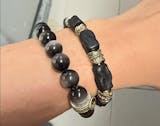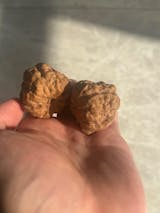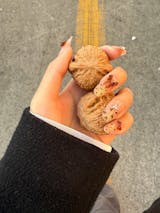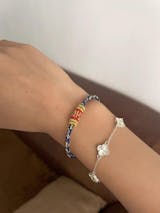Guide to Jade Buddha Pendants: Sitting vs. Standing
Introduction
Many jade enthusiasts enjoy wearing jade Buddha pendants, but some may notice that these pendants come in both sitting and standing forms. This raises the question: which one is better?

Types of Jade Buddha Pendants
Sitting Buddha
The vast majority of jade Buddha pendants depict a sitting Buddha, with a kind and peaceful expression, exuding a sense of stability and grace. This posture symbolizes wisdom, contentment, and auspicious blessings.
Standing Buddha
Some jade Buddhas are carved in a standing position. Like the sitting Buddha, the standing Buddha features a large belly and a cheerful smile. However, its posture adds a sense of dynamism, making it appear more lively and elegant.

Differences Between Sitting and Standing Buddhas
Symbolic Meaning
Both sitting and standing Buddhas share similar meanings, representing prosperity, blessings, and a positive outlook on life. Their presence is believed to bring good fortune and protection to the wearer.
Value and Price
When comparing jade Buddhas of the same quality and size, sitting Buddhas tend to be more expensive than standing Buddhas. This is because the rounded shape of a sitting Buddha often results in more material wastage during carving. In contrast, the elongated shape of a standing Buddha makes better use of jade slabs, reducing material loss and, consequently, the overall cost.
Suitable Wearers
-
Sitting Buddha: With its composed and dignified appearance, the sitting Buddha is well-suited for older individuals, as it complements their mature demeanor.
-
Standing Buddha: More modern and lively in design, the standing Buddha is ideal for younger people, offering a fashionable yet meaningful accessory.

How to Choose a High-Quality Jade Buddha
To find the perfect jade Buddha pendant, consider these five essential aspects:
-
Facial Features The face is the most important part of a jade Buddha. In jade carving, there is a saying: “A good face determines half the value.” A well-crafted Buddha should have smooth facial lines, well-proportioned features, and a natural, gentle expression. A plump and rounded face with a harmonious smile enhances the pendant’s aesthetic and spiritual appeal.
-
Eyes Since jade Buddhas are always depicted with a smile, the eyes play a crucial role in conveying this expression. The best jade Buddhas have crescent-shaped eyes with gracefully curved lines and slightly upturned corners, giving them a joyful and wise appearance.
-
Belly A large belly is a defining characteristic of a jade Buddha, symbolizing tolerance and abundance. When selecting a pendant, ensure the belly is full and round, as this enhances its positive meaning. However, it should also be proportionate to the overall design.
-
Clarity and Purity Beyond shape and carving, the overall clarity of the jade is essential. Naturally, jade often contains minor imperfections, but the fewer, the better. However, blemishes on the face or the glow of the Buddha are considered major flaws that can significantly affect the piece’s value.
-
Personal Connection Ultimately, the most important factor when choosing a jade Buddha pendant is personal affinity. A truly special piece is one that resonates with you at first sight, giving you the feeling that it was meant to be yours.

Final Thoughts
Both sitting and standing jade Buddhas have their own unique appeal and significance. Whether you prefer the dignified presence of a sitting Buddha or the dynamic elegance of a standing Buddha, the key is to choose a piece that matches your personal style and beliefs. By paying attention to facial features, expression, body proportions, and jade quality, you can find a jade Buddha that not only enhances your appearance but also brings positive energy and blessings into your life.
Related articles:
The Spiritual Meaning of Different Colored Jade Buddha Necklaces
The Meaning and Value of a Jade Buddha Necklace
How Much Is Jade Worth and the Most Expensive Jade Types
Why Do People Wear Jade Bracelets: Meaning, Symbolism, and Benefits


























































